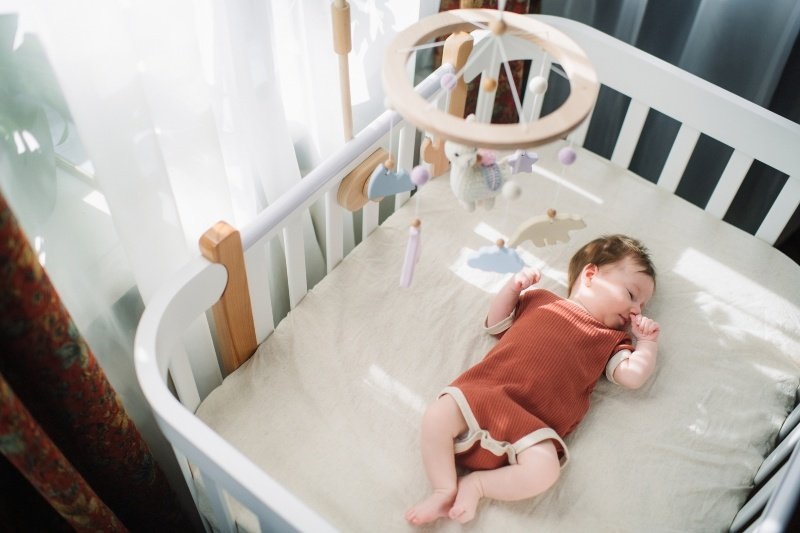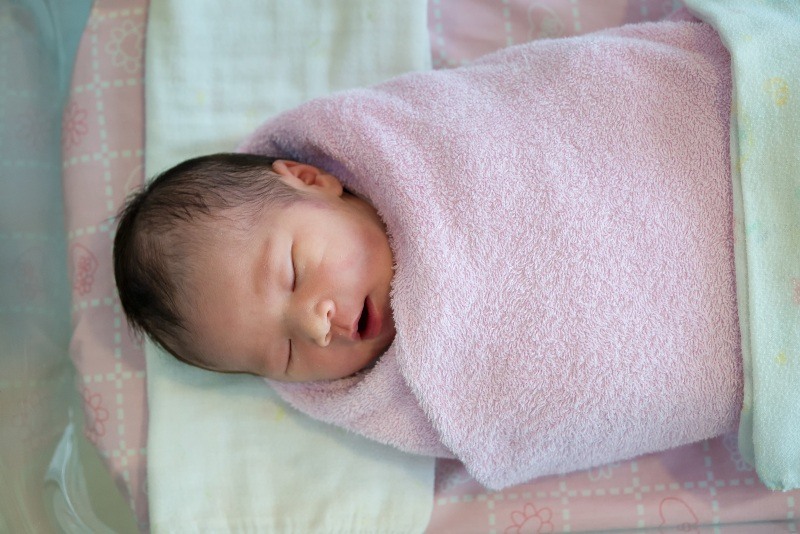- Home
- Mind & body
- Safe sleeping for your baby
At CBHS we help you manage your health challenges. We believe in offering you the services, support and tools you need to live your best life.
Our Better Living Programs are available to support eligible members towards a healthier lifestyle. Each Better Living Program is subject to its own eligibility criteria.
Contact us for more information and to confirm your eligibility for a program.
Safe sleeping for your baby

Your baby will spend a lot of time asleep – it’s a key part of their development. And even though developing safe sleeping patterns for your newborn can be an overwhelming task especially for new parents, this is not a step you should overlook. Safe sleep practice is vital because it can reduce the risk of Sudden Infant Death Syndrome (SIDS). This is the devastating, unexplained death, during sleep, of an otherwise healthy infant, less than one year old.
Fortunately, the rate of SIDS in Australia is now quite low. The Australian Bureau of Statistics has found that the incidence of SIDS has fallen by as much as 84% since 1990. And it’s widely believed that this statistic is because of the many public health campaigns that promoted safe sleeping practices such as placing sleeping babies on their backs.
Did you know?
Australian researchers were among the first to provide data that demonstrated a link between face-down sleeping and an increase in the risk of SIDS.
While the medical profession continues to research the causes of SIDS, we do know that it happens at a particular stage in a baby’s development and it affects babies who are vulnerable to certain stresses. This vulnerability can be due to premature birth, low birth weight, and other reasons not yet known. Stresses in the environment can include tobacco smoke, getting tangled in bedding, a minor illness or having a breathing obstruction.
What is safe sleeping?
Red Nose is the recognised national authority on safe sleeping practices for infants and children. This respected organisation is a great resource you can go to if you’re not sure about safe sleeping arrangements for your baby.
Red Nose recommends the following safe sleeping practices:
- Sleep your baby on their back from birth, not on their tummy or side
- Make sure your baby sleeps with their head and face uncovered
- Keep your baby’s nursery and environment smoke-free before and after birth
- Place your baby in a safe cot by your bed for the first six to 12 months
- Breastfeed your baby
- Choose a cot that meets Australian standards
- Select a firm, clean and well-fitting mattress
- Remove all quilts, doonas, pillows, toys and loose bedding
- Keep your baby’s sleeping area free of hazards like dangling cords and electrical wires
- Remove clothing with ties or hoods before settling your baby to sleep.
“Australian researchers were among the first in the world to establish a link between babies sleeping face-down and an increased SIDS risk.”
You should also avoid overheating your baby or falling asleep with your baby on a couch or sofa. This is because when you sleep with your baby on a couch or sofa, there is a higher chance that your baby could become stuck between cushions and you may not notice. It's important that any person caring for your baby is familiar with these safe sleeping practices.

Is co-sleeping with your baby safe?
Some parents believe sleeping with their baby in the same bed at night will deepen their connection. And while this may be true, Red Nose advises that co-sleeping is not always safe. The safest place for your baby to sleep is in a cot or bassinet beside your bed.
If you do decide to co-sleep, Red Nose recommends some ideas you can put into practice that may reduce the risk:
- Place your baby on their back to sleep – never on their tummy or side
- Make sure the mattress is clean and firm
- Keep pillows and adult bedding away from your baby
- Make sure your baby can’t fall off the bed (you can put the adult mattress on the floor to help reduce the risk)
- Assemble your bedding and sheets so they can’t cover your baby’s face
- Place your baby to the side of one parent – never in the middle of two adults, or next to other children or pets
- Move the bed away from the wall – so your baby can’t get trapped between the bed and the wall
- Use a safe sleeping bag
- Tie up long hair, remove all jewellery and remove teething necklaces.
The benefits of using a sleeping bag for your baby
Many new parents have found baby sleeping bags are a good way to make sure baby is sleeping safely. In fact, there are many benefits to using a safe baby sleeping bag. When your baby is in a safe sleeping bag, it’s difficult for them to slip around inside the bag and become completely covered.
When you’re looking to buy a sleeping bag for your baby, make sure it’s the correct size and that it includes a fitted neck, armholes and doesn’t come with a hood.
Here are some of the benefits of using a safe sleeping bag:
- Reduces the risk of bedclothes covering your baby’s face
- Helps deter your baby from rolling onto their tummy during sleep
- Promotes back sleeping because the zipper opens to the front
- Helps keep your baby’s temperature at a more constant level while they’re sleeping.
“Making sure your baby sleeps on their back is a key component of a safe sleeping practice.”

Safe sleeping practices for greater peace of mind
Watching your baby sleep can be a beautiful and moving experience – and making sure they’re sleeping safe needn’t be daunting. By following a few key pieces of advice you can enjoy greater peace of mind while your baby naps: sleep your baby on their back, avoid loose bedclothes, keep the baby’s environment smoke-free and use a safe sleeping bag.
For more safe sleep advice you can call Red Nose on 1300 998 698. This free service is available to parents and carers 9am-5pm, Monday to Friday.
All information contained in this article is intended for general information purposes only. The information provided should not be relied upon as medical advice and does not supersede or replace a consultation with a suitably qualified healthcare professional.
Sources
https://rednose.org.au/section/safe-sleeping
https://rednose.org.au/section/education
https://www.ncbi.nlm.nih.gov/pubmed/2866397
https://rednose.org.au/article/what-is-a-safe-sleeping-environment
https://rednose.org.au/section/safe-environment
https://theconversation.com/what-causes-sids-what-we-know-dont-know-and-suspect-86544
https://rednose.org.au/article/why-are-safe-sleeping-recommendations-so-important
https://www.healthdirect.gov.au/sudden-infant-death-syndrome-sids
https://www.acecqa.gov.au/resources/supporting-materials/infosheet/safe-sleep-and-rest-practices
https://www.breastfeeding.asn.au/bfinfo/breastfeeding-and-co-sleeping
https://rednose.org.au/article/does-sleeping-with-baby-on-a-sofa-or-couch-increase-the-risk-of-sudi
Health and wellbeing
programs & support
You Belong to More with CBHS Hospital cover:
- Greater choice over your health options including who treats you
- Get care at home with Hospital Substitute Treatment program
- Free health and wellbeing programs to support your health challenges
Live your healthiest, happiest life with CBHS Extras cover:
- Benefits for proactive health checks e.g. bone density tests, eye screenings
- Keep up your care with telehealth and digital options
- Save on dental and optical with CBHS Choice Network providers
